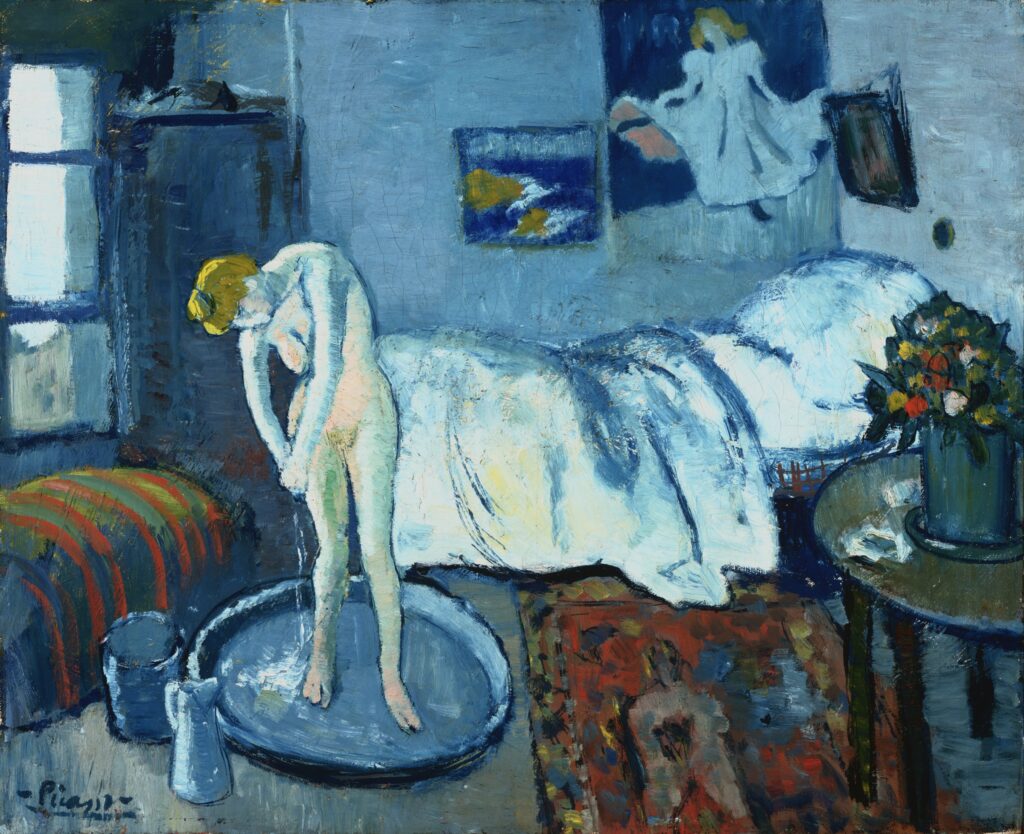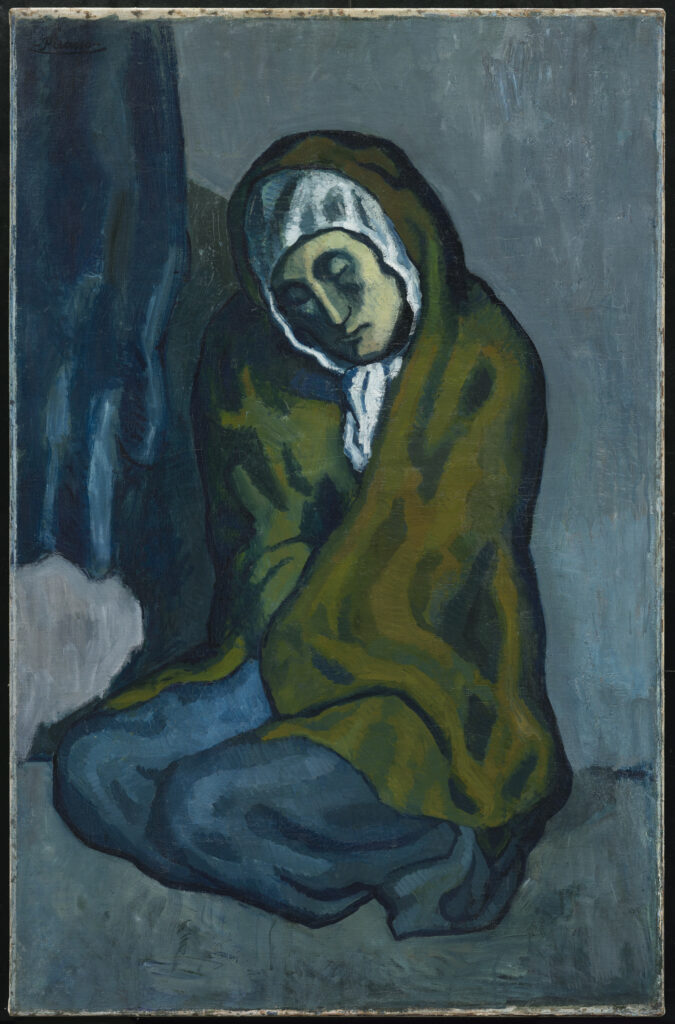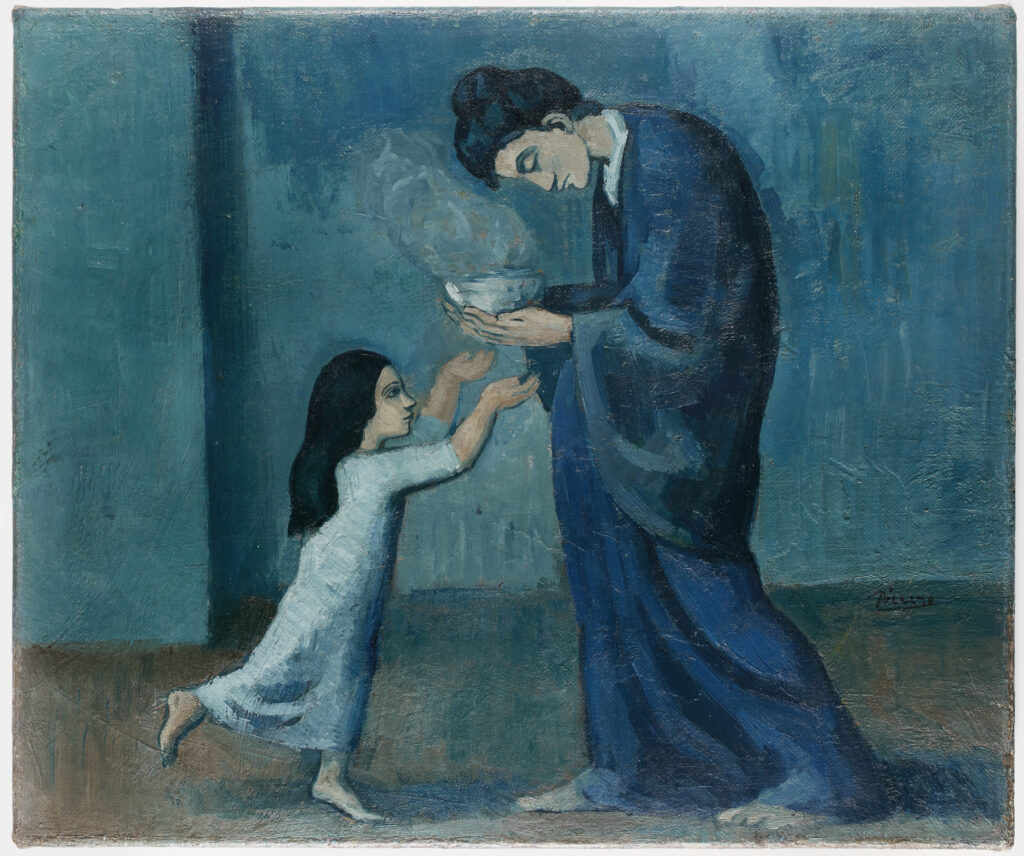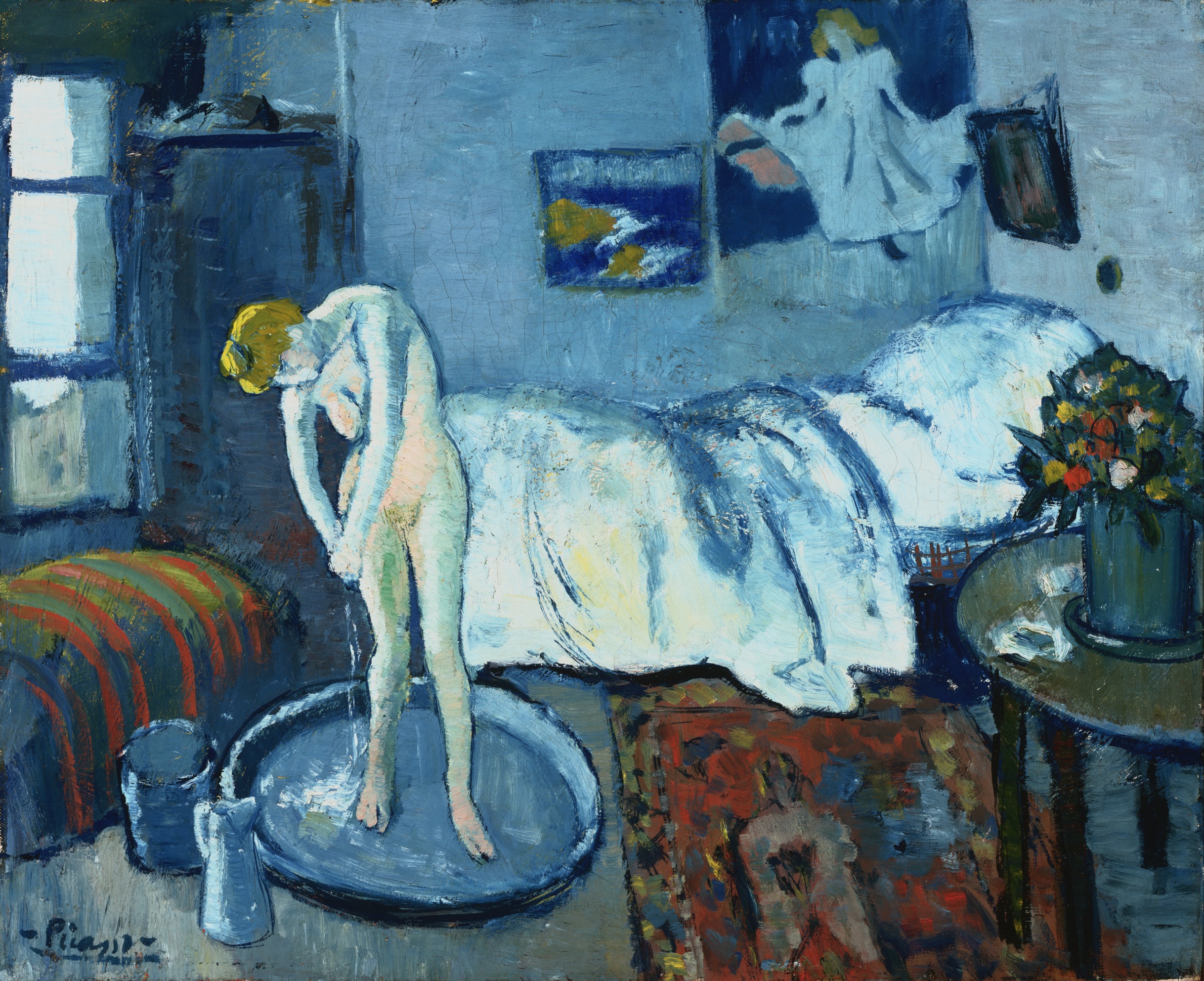Opening October 6 for AGO Members, October 9 for Annual Pass holders, and October 26 for the general public, Picasso: Painting the Blue Period is the first exhibition in Canada to zero in on this pivotal chapter of the modernist master’s early career.
The show features more than 100 revealing artworks from 15 countries, including paintings, sculptures and works on paper by Picasso as well as those who inspired him. Many of these are major international loans from private collections and public institutions around the world.
What is the Blue Period and why is it important?
The somber works, created between 1901 and 1904, reflect a period of poverty and instability in Picasso’s life, then a fledgling painter in his late teens and early twenties.
Blue and blue-green tones dominate images depicting the old, infirm, beggars, prostitutes, drunks, the blind and street urchins, immortalizing his everyday experiences.
This prolific period followed the recent suicide of his friend, Carlos Casagemas, who featured as the subject of a number of his paintings from this time in his life.
Picasso formulated his signature Blue Period style as he moved back and forth between the cities of Paris and Barcelona, sometimes borrowing from and transformed the subject matter and motifs of his contemporaries and predecessors during these critical years.
The spellbinding works day force audiences to grapple with uncomfortable issues such as poverty, labor unrest, gender inequality and war, issues that are still as prevalent today as more than a century ago.
Three pieces of artwork are central to the exhibition as audiences will get an exclusive chance to discover the underlying layers found using the latest imaging technology in laboratories.


The three pieces of Blue Period artwork that you should not miss

Of central importance to this exhibition is the extensive scientific and art historical research conducted by the AGO and The Philips Collection. Using a cutting edge imaging technology called hyperspectral infrared reflectography, it was discovered that there are hidden scenes under the paintings, showing Picasso used elements of earlier works to create some of these pieces. The secrets of these paintings are fascinating, and that is why these three paintings are a must-see.
What meets the eye is a nude woman bending over in a bath tub, but look beneath the first layer of paint, and there is a bearded man lurking behind. This is not a plot of a horror movie—Picasso was still a struggling artist when he painted this work, and he may have had to reuse old canvases in his work.
Crouching Beggarwoman (Barcelona, 1902; Art Gallery of Ontario)
Tilt your head 90-degrees to the left—do the curves of the woman’s shoulders and arm look like the outline of some mountains? It is not a coincidence. X-ray scans of this painting show a landscape painting underneath the portrait, and the artist may have traced the silhouettes for the woman’s form.

Anonymous gift, 1963. © Picasso Estate / SOCAN (2021)
The Soup (Barcelona, 1903; Art Gallery of Ontario)
Is the hunching woman giving the soup to the girl, or is she receiving it? Perhaps the artist wasn’t sure either. Parts of this work appears to have been painted over as many 13 times. At one point there was a second child and a Roman urn in the painting, and the position of the woman also changed. What can we learn about the artist’s creative process through this discovery?

of Margaret Dunlap Crang, 1983. © Picasso Estate / SOCAN (2021)
Audiences will get an exclusive chance to discover the underlying layers of these three Blue Period canvases in laboratories in the exhibition. The final gallery of the show will reveal how these three Blue period paintings informed Picasso!s artistic experiments during his important Rose Period, 1904 – 1907.
Create your own blue masterpiece
Inspired by the exhibition, AGO will also be presenting several free Zoom 30-minute drawing sessions so you can learn about the many shades and ways of blue. Guided by artist instructor Amy Wong, it is open to everyone—all you need is watercolour paper and some blue-coloured pencils, pens or crayons. More related talks and courses are available. For more information, visit www.ago.ca.

Shop and dine
In celebration of Picasso: Painting the Blue Period, AGO Bistro will present French and Spanishinspired bites and cocktails this fall. Stay tuned for more details and visit ago.ca/dine/ago-bistro for updates.
And if you want to take home something blue, look for the lavishly illustrated 244 page hardcover exhibition catalogue by DelMonico Books/D.A.P at shopAGO. A selection of Picasso-inspired prints, postcards, books and gifts are also available. For more details, visit shop.ago.ca/store or explore shopAGO in person. Physical distancing and capacity measures are in place inside the shop.
Picasso: Painting the Blue Period is curated by Kenneth Brummel, AGO Associate Curator, Modern Art, and Dr. Susan Behrends Frank, Curator at The Phillips Collection. It is co-organized by the Art Gallery of Ontario, Toronto, and The Phillips Collection, Washington, DC, with the exceptional support of the Musée national Picasso-Paris.

